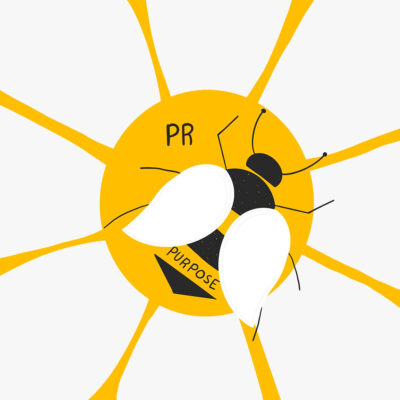Public Relations as a profession often carries a negative connotation. Corporate Public Relations teams and PR agencies are thought to be made up of people who spend their days working on ‘spin’: skewing information to control a story or as firewalls: standing between the free press and the forces of greed. With this impression, we are often asked about the relationship between public relations and corporate purpose. If purpose is supposed to be about authenticity and social good, then how can you have both? The landscape becomes even more challenging when you consider the growth of ESG and stakeholder capitalism (Larry Fink’s Letter to CEOs 2022: The Power of Capitalism), which requires corporations to engage with more people in more places than ever before.
To respond this good question, let’s ground ourselves by defining public relations. A common definition describes public relations as the practice of managing and disseminating information from an individual or an organization, but this definition falls short because it lacks a clear outcome. The unwritten implication is that it is for the benefit of the individual or the organization. Alternatively, the Public Relations Society of America defines public relations as “a strategic communication process that builds mutually beneficial relationships between organizations and their publics.” The outcome requires that individuals and organizations understand what is mutually beneficial to their stakeholders.
The stakeholder-centric approach is grounded in several theories, most notably the recognition of the interconnectedness of stakeholders and their ability to exchange value across a network – that their interests, and what is of benefit to them, depends on others within the system1. This merges value creation and exchange, the priority for shareholders, with ethics, a priority for most stakeholders.
Stakeholders are equipped with communication platforms that were barely imaginable 20 years ago, and this has led to greater organization, empowerment, and agency. Today, stakeholders are aware and interested in the relations a corporation will have with other stakeholders: Investors care about the integrity of supply chain partners, customers care about labor practices, employees care about CO2 emissions, and industry media care about employee engagement, to name a few.
The narratives we share need to reflect the priorities of each stakeholder and recognize that all narratives must be complementary; it is the public relations team who is responsible for ensuring these narratives come together with the corporate purpose to make a cohesive whole.
Recognizing this interconnectedness requires that public relations do more than tailor messages to specific audiences, but rather that they operate with a systems mindset, to be holistic as they empathize with each stakeholder group, deeply understanding what they seek and how they can benefit. It was once enough for public relations professionals to ‘know their audience’ and ‘understand the beat,’ but today the business of public relations is about contributing to ‘mutually beneficial relationships’ and purpose both elevates and clarifies how an organization should contribute.
Purpose both elevates and clarifies
how an organization should contribute.
Understanding this as the outcome of public relations efforts, shines a light on the complementary space that public relations and corporate purpose occupies. Further, stakeholder capitalism has its critics who raise serious concerns around which stakeholders are considered amid decision making and that it could be seen as over-reaching and akin to Victorian-era corporate paternalism, making decisions that are perceived to be beneficial while failing to give agency to those stakeholders2.
Effective public relations practices mitigate these risks: practices that require a deep understanding of what is beneficial to stakeholders, practices that take a holistic view of the stakeholder groups as an interconnected system, and practices driven by empathy that seek to build relationships. At BCG BrightHouse, we activate and embed corporate purpose across three broad areas: culture, strategy, and communications or even more simply put: Be, Do, and Say. We begin with ‘Be’ ensuring that our clients know their distinctive strengths (and are leaning into them); second we address ‘Do’ decision making around what our clients can begin, stop, or do more of across their operations (a review lobbying efforts and contractor agreements for example); and then the third consideration is ‘Say,’ which is intentionally the last area because when you are clear on your Be and clear your Do, then Say can be sincere and more authentic.
Finally, a key outcome of corporate purpose, is to derive business value from being purpose-driven. The Public Relations team is responsible for raising awareness among stakeholders so that they perceive the corporation acts in a way that reflects its purpose. (See: How the Impact of Purpose is Best Measured for more detail). This means the Public Relations function, rather than working against corporate purpose or being constrained by it, is a critical part of ensuring that purpose delivers value (ROI) to the organization.
Organizations seeking to embed purpose, those who are committed to measuring impact, will view public relations as a key partner – as a partner who not only ‘knows their audience’ but who also brings a distinctive, clarifying view of stakeholder relationships that are built with mutual benefits.
1Freeman, R. E., & McVea, J. F. (2001). A Stakeholder Approach to Strategic Management. Working Paper 01-02 (via Research Gate)
2 https://instituteforpr.org/deconstructing-stakeholder-capitalism/
